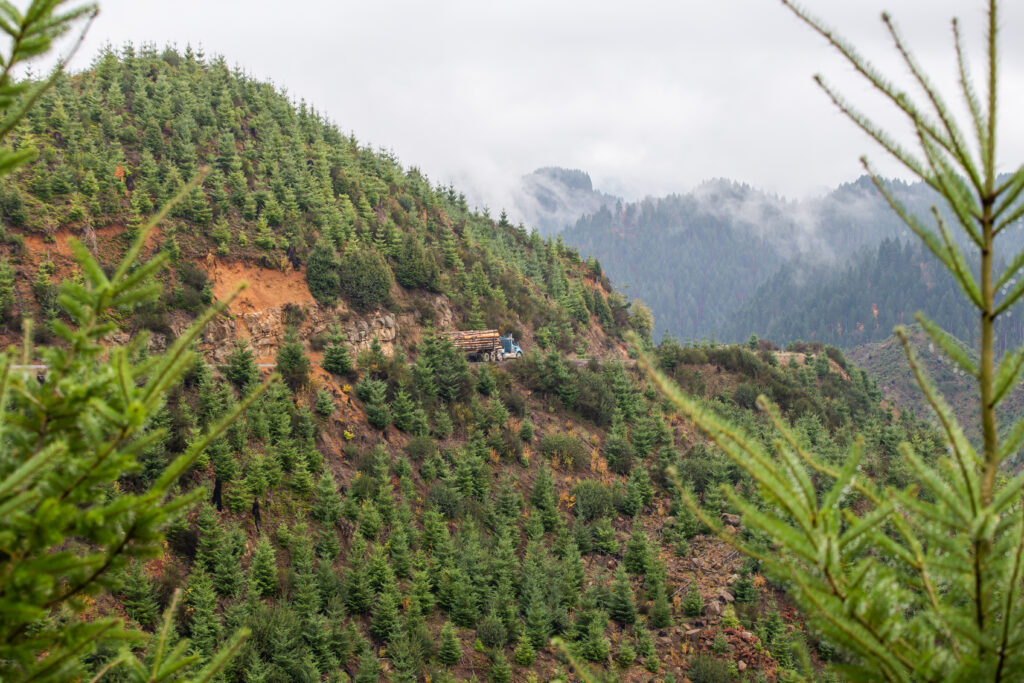Forces County and Forestry Department Budgets into the Red
[SALEM, March 7, 2024] – After three failed motions to either revise the draft Habitat Conservation Plan to increase harvest or delay the vote, today the Oregon Board of Forestry voted four-to-three to advance a 70-year Habitat Conservation Plan that will cost rural Oregon counties millions of dollars and send the Department of Forestry’s operating budget into the red.
“While we are not surprised by today’s vote, we are extremely disappointed,” said OFIC President Chris Edwards. “Options were on the table to ensure species thrive while conserving critical jobs and our capacity to build homes from locally grown Oregon trees. Instead, there was lot of process but not a lot of progress, and in the end the Board made a decision that sacrificed too much and added to a growing list of unbalanced choices in this state; choices that haven’t been leading to good outcomes for working families. And there is no evidence this one will be terribly different.”
The plan has been controversial from the beginning, as timber harvest on state forests are an important source of revenue for the Oregon Department of Forestry and for 15 Forest Trust Land Counties and hundreds of taxing districts with which the state has nearly a century old contractual relationship to actively manage land the counties deeded to the state. In return, the Department provides 64 percent of the revenues produced from timber harvest to the counties for critical public services.
After releasing the draft plan two years ago, the Board has heard from thousands of Oregonians in public and written testimony, including from legislators, county representatives, forest sector employees and rural Oregonians, asking for changes that would produce a better balance. Alternatives were proposed by experts that would have increased harvest levels while still maintaining species protection. In response to such a high volume of disagreement and controversy, recent Board meetings have dramatically restricted opportunities for testimony or sidelined the public to forums where the Board wasn’t present.
Despite that, and the fact that the most recent modeling data indicate the proposed plan will generate far more habitat (150 percent more) than originally projected, last Friday, State Forester Cal Mukumoto released his recommendation to advance the plan with no changes.
“The recommendation by State Forester Mukumoto is rather disheartening,” said Tillamook County Commissioner Erin Skaar. “Counties should be treated and viewed as partners in the management of these forests. We entrusted them to the state for long-term management in partnership, however in two years of discussing this plan there have not been any changes made that the counties have requested. Our communities will not be the same. More mills will close, and counties will have increased expenses that frankly, we do not know how we will fund.”
Because most counties distribute a significant amount of revenues they receive from state forest harvest to local schools, it will be local school districts that receive the largest cuts.
“Fortunately, we have a safety net in the state called the school equalization plan,” said Coos County Commissioner John Sweet. “But this is going to put a burden of millions of dollars upon that plan. I hope the people that run that know this and have those resources. There are a few small rural school districts who get more money from harvest revenues than they will from school equalization.”
On Tuesday, Governor Tina Kotek sent a letter to the Board of Forestry expressing her commitment to work with the counties and bring a proposal to the 2025 legislative session to permanently address the estimated financial shortfall the counties will experience because of the reduced harvest associated with the Habitat Conservation Plan.
“[The Department’s legislative coordinator] discussed the experience in the Legislature this session – described as a ‘tight fiscal environment’ – where there was an ask for $3.5 million from the General Fund that was turned down for [the] Department,” said Skaar. “I appreciate the governor’s optimism, but it’s a very frightening space to be looking at a wing and a prayer that the Legislature refills that for all of us. If we couldn’t find $3.5 million, where will we find the $35 million.”
The plan would also reduce revenue used to fund the Department’s state lands division in the coming biennium close to $30 million; money the agency currently uses to pay the salaries of employees who maintain forest roads, replant and restore state forests after wildfire, and even serve as firefighters during the height of fire season.
“If harvest levels drop to 167 million board feet, this is an $88 million biennial reduction to the Department and the trust counties,” said Board member Karla Chamber. “Over 70 years this is $3.08 billion coming out of those 15 trust counties and the Department without interest, the very agency we need financially healthy to fight wildfires. If we look to Oregon taxpayers to pay for all of this, are we better off? There is no financial plan for this Habitat Conservation Plan; a future negotiation is not a budget plan, a contract or a commitment.”
The Department set out to develop a Habitat Conservation Plan for management of over 600,000 acres of Oregon’s western state forests, starting in 2017, to ensure species conservation and financial viability for the Department. A Habitat Conservation Plan is a voluntary plan or agreement available to landowners under the federal Endangered Species Act to protect wildlife species and the ecosystems on which they depend. It is intended to ensure landowners’ operational flexibility and assurances while providing for the needs of fish and wildlife.
In 2018 the Board approved pursuit of the plan based on a business case analysis and modeling data that projected harvest levels under a Habitat Conservation Plan would be roughly 250 million board feet – which roughly matched what the Department had been harvesting annually since 2000. As the plan developed, that number was initially revised down to roughly 225 million board feet, a number the Department continued to use until last year when more accurate modeling data indicated the plan would produce closer to 168-187 million board feet annually, roughly 30 percent less than originally promised.
###
The Oregon Forest Industries Council is a trade association representing more than 50 Oregon forestland owners and forest products manufacturers. OFIC’s members combine sustainable forest management practices with the latest science and technology to continuously improve the environmental, social and economic value of healthy working forests. We protect and manage more than three million acres of Oregon forestlands, protect employment of over 60,000 Oregonians and make Oregon the nation’s largest state producer of softwood lumber, plywood and engineered wood. For more information, visit ofic.com.


